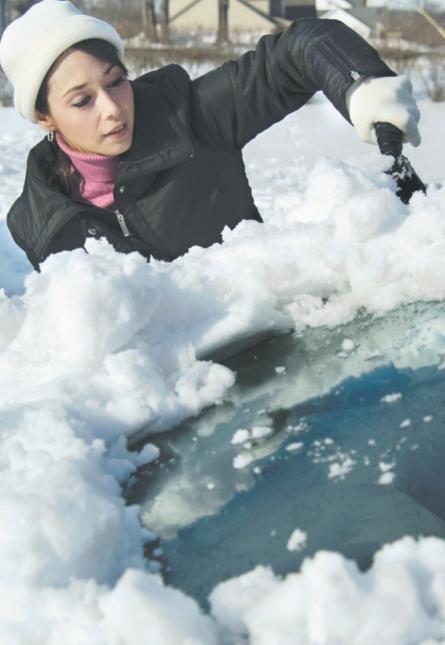
3 minute read
Winter prep checklist
Fall is a time to prepare homes, vehicles and even our psyches for the arrival of winter. To get your car cold-weather ready, take the following precautions now.
Maintain a clean windshield to ensure your visibility is not compromised while driving.
Visibility is an essential component of automotive safety. According to the United States Department of Transportation’s Federal Highway Administration, inability to clearly see the road, other motorists and potential obstacles is a leading contributor to automotive accidents and injury
Approximately half of all fatalities due to motor vehicle crashes occur at night, even though the National Highway Traffic Safety Administration notes that traffic volume is substantially less at night. Lack of visibility, which may result from a dirty windshield or inclement weather, can render pavement markings nearly invisible or throw off drivers’ senses of direction.
Poor visibility can be hazardous, and drivers must take steps to ensure they have maximum visibility at all times, whether it’s day or night or if the weather is poor or fair.
One of the best ways to ensure maximum visibility is to keep your windshield clean. Not all windshield washer fluids and wipers are created equally. For example, some washer fluids are ineffective in freezing temperatures. Frozen washer fluid can cause a complete blockage of the system and greatly impair visibility.
As anyone who has driven on snowy and/
Always read the product label before purchasing washer fluid. Summer blends are only effective when temperatures remain above 32 F. When the mercury dips below freezing, these fluids freeze up. Winter formulas should contain an antifreeze solution that will lower the freezing point of the liquid. Many such fluids employ methanol to not only prevent freezing but also to melt frost and light accumulations of ice.
Drivers also may be able to supplement their washer fluids with common items to increase durability during extreme cold snaps Mix 99 percent isopropyl rubbing alcohol into the washer fluid to prevent it from freezing. Otherwise, the washer fluid brand may have specific instructions for mixing for use in areas where the temperature regularly dips below freezing In addition to maintaining an obstructionfree washer fluid system, drivers can reduce accidents from poor visibility by heeding these tips from The National Weather Service:
•Clear your windshield and mirrors before getting on the road.
•Drive slow to maintain a safe stopping distance.
•Be aware that, when driving in conditions where visibility is impaired, drivers tend to follow the tail lights of the vehicles in front of them. Keep your headlights on to improve your own visibility and help others see your car.
•Don’t slow down so much that you become a hazard to other drivers.
•If necessary, pull off the road and wait for conditions to improve. When pulling off, park as far off the road as possible, then turn off your headlights and put on your hazard lights.
• Tire pressure can drop in cold weather. When tires are underinflated, you lose fuel efficiency, so monitor and maintain tire pressure throughout the winter.
• Those who live in particularly cold climates should switch from all-season to winter tires. Much as you wear winter boots to provide more traction and protection than sneakers, so should you equip your vehicle with tires that will stand up to winter terrain.
• Check on the status of your battery and its starting power. Cold weather an put more strain on a car battery A battery that is already weak may not turn over when you need it most.

• Replace worn wiper blades and upgrade to a windshield fluid that is rated for subzero temperatures. Each of these items will improve visibility when winter precipitation is making its presence felt.
• Schedule an oil change at the beginning of winter. Dirty oil can hinder cold-weather starts and, if coupled with low coolant levels, can make it difficult for the engine to turn over.
• Keep jumper cables, a battery booster pack and warning cones in your vehicle. These can come to the rescue if your battery dies and you’re stranded on the side of the road.
• While you’re stocking the trunk or cargo bed, include a shovel, sand or cat litter, a flashlight, an ice scraper, water, and a blanket. These are good emergency items to have in the event your car breaks down in the winter. You can dig your tires out of your tires out of a snow drift with the shovel and apply litter to increase traction. The blanket will come in handy if you have to sit in a cold car for a while awaiting roadside service.
• Consider taking a winter driving course. Icy, snowy conditions completely change the defensive tactics needed to navigate the roads. A prepared driver is one who is more likely to avoid accidents and make it home safely






